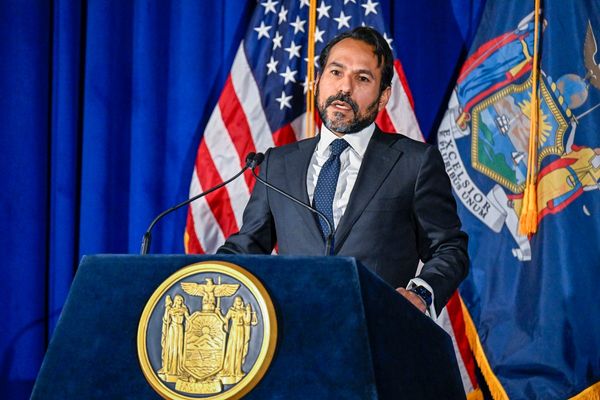When she was just nine years old, Lindsey Vonn had a day that in many ways defined the rest of her life.
At an event at a local ski shop, she first met the affable Picabo Street, then the reigning American woman ski champion, who signed a poster for her. Then, a few minutes later, she ran into a less welcoming Olympic champ, Diann Roffe-Steinrotter.
"I asked for an autograph (from Roffe-Steinrotter), and she said no. And so on the same day, I had a very positive experience and a very negative one," she told Investor's Business Daily.
Even at that young age, Vonn refused to allow her brief encounter with Roffe-Steinrotter to embitter her. On the contrary, "It was always on my mind," she said. "Whenever I met a child, a fan or anyone supporting me as a ski racer, I always tried to be a person like Picabo was: positive and inspirational. Someone, you know, kids could look up to."
As for her meeting with Street, in her memoir, "Rise: My Story," she wrote: "That pushed me over the edge in terms of my motivation and drive."
Race To The Top Like Lindsey Vonn
That motivation and drive sent her to the top of the ski racing world. Vonn, 38, who retired in 2019, won four World Cup overall racing championships and three Olympic medals, including the first gold in downhill by an American woman. She also won 82 World Cup races, until recently the most by any American. She's thought to be one of the greatest skiers of all time.
It was, in fact, shortly after her meeting with Street that Lindsey announced she wanted to be an Olympic skier. Her father, a skier himself, warned her: "You will only get there if you do things others won't." He added, "You will miss sleepovers. You will miss proms. You will miss a lot of things other kids won't."
Lindsey took on the challenge. She soon realized that getting to the top of the mountain of World Cup racing is like how you get to the top of most fields. Practice. Practice. And more practice.
"It takes an extremely large amount of practice. A lot of people use the 10,000-hour model. But I would say I did far more than that," she said, on the thesis that it takes 10,000 hours to master a difficult activity.
Train, Don't Just Practice
Reaching the elite World Cup champion level requires more than repeated runs down a slope, she said. It also takes constant hours in the gym, building strength and endurance. "If you want to be better, you have to work both on the hill and off it," she said.
Even as a preteen, Vonn used to take long runs every weekend in addition to her training on skis. "What 12-year-old wants to run a mile every weekend? No one," she said. "But I inherited my dad's and my grandfather's mentality. If you want to do something (you do what's needed to achieve it). You work hard for it and you don't complain."
Sue Dorf, one of Vonn's co-managers at WME Sports, told IBD: "Lindsey's work ethic is unparalleled. She's the first to arrive and the last to leave."
Vonn: Modify Your Approach Over Time
Vonn remained methodical about practicing, even toward the end of her career. "Obviously, the older you get as a ski racer, you physically cannot do the volume you used to do. But you need to continue to practice. After my injuries especially, I could maybe only do three or four runs downhill a day, whereas in the past I would have done six or seven."
But success at the World Cup level actually requires more than practice. "When you get to an elite level in any sport, everyone has a certain level of talent, a certain level of strength, a certain level of athleticism," she said. "But then to be the very best, it has a lot more to do with mental strength and how much you are willing to risk, and that's what separates you from everyone else."
That and confidence. "Every time I stood at the starting gate, I believed that I could win."
Mark Ervin, Vonn's other co-manager at WME, puts it this way: "She prioritizes oxygen just behind winning."
Push New Limits
Something else that separated Vonn from the pack was her willingness to try something new, to innovate. She started practicing on the longer, more difficult runs with male World Cup racers. Because she was both physically and mentally strong she switched to men's skis, which — 15 years ago when she first did it — were longer, stiffer and often more stable.
She was the first woman to do so and, as she recalled, "people thought I was insane. They laughed at me and said I'd never be able to ski on men's skis. But I know what works for me and realized I didn't need anyone else's approval."
Criticism in the social media, no-holds-barred era wasn't limited to her choice of equipment. "A lot of times, people told me I was doing something wrong: the way I did an interview, the way I wore makeup when I skied," she said. "Everyone had an opinion, and I'd say most of those opinions weren't positive. But I can't change who I am."
Block Out Others' Negative Thoughts
At some point, Vonn stopped worrying about what other people thought. "I think positive reinforcement is important, not just in sports but in every walk of life," she said. "I tried to listen to the people who understood and supported me and tried to learn from people who are critical of me. And when someone was hurtful, I used that as motivation. I used it as fuel, carried it with me and used it when it was time to race."
Still, the pressures of getting to and staying at the top weighed on her. In 2012, she did something that at the time few people of note did: admitted to suffering from depression. Fearing the loss of sponsorships, "a lot of people told me not to go public with it. But, for me, it was an important part of my journey."
And she was glad she spoke up. "I felt a huge relief when I talked about it openly. I had that weight off my back," she said, adding that she got support to get through it.
Asked if there was any advice she'd give her younger self, she said: "I honestly get asked this question a lot. And I wouldn't tell myself to do anything different. Making mistakes, having failures, facing obstacles, it's all part of the process of learning to be."
Look To Your Future Like Vonn
Even after her then-earth-shaking public admission, her career continued to prosper both on and off skis. The importance of building an off-the-skis life is something her dad ingrained in her. He told her, "You have to be smart, business-wise."
Vonn's father was proud that after his skiing career ended due to injury, he became a lawyer. "He told me I needed a backup," she said. "If I was going to pursue a career as an athlete, I couldn't be just a skier."
The young Vonn took that advice seriously and began preparing early. Since she retired, she's pursued a career advising companies on sports marketing and is involved in venture capitalism.
Vonn approaches her new life, notes WME's Ervin, "just like she did racing. She never settles and works at a pace that is absolutely relentless. She has excellent instincts, innate curiosity, and is doing the work to educate herself."
Draw Lessons From Your Past
Vonn sees similarities in her venture capital and her time on the slopes. "There's an element of risk and challenge in both," she said.
At one point in her life, she didn't know who she'd be without ski racing. She admits that in the beginning her retirement "left a big hole in my life and was mentally challenging." That's past.
Asked who she is now, Vonn responds: "I'm just Lindsey. A happy person. My biggest goal is to leave a positive legacy, something people can look to for inspiration."
Lindsey Vonn's Keys
- First American woman to win downhill skiing gold at the Olympics, plus numerous World Cup races.
- Overcame: Numerous injuries, broken bones, sprained ligaments, and twice being airlifted off a hill.
- Lesson: "I don't see injuries as something to be scared of. I always relate to my mother, who had a stroke when she had me and struggled a lot in her life. But she was always positive and saw every day as another chance, another opportunity. That's how I saw ski racing after injuries. I felt even luckier to be on the mountain than I was before."







